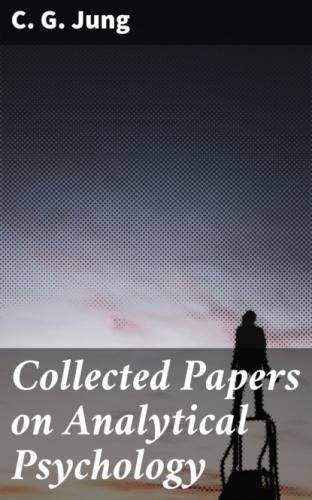Foreword to New Edition 352
Adler's views more fully discussed—The psychological events of the war force the problems of the unconscious on society—The psychology of individuals corresponds to the psychology of nations.
The Psychology of the Unconscious Processes 354
I. The Beginning of Psychoanalysis
The evolution of psychology—How little it has had to offer to the psychiatrist till Freud's discoveries—The origin and reception of psychoanalysis—The prejudiced attitude of certain physicians—Freud's view that his best work arouses greatest resistances—The Nancy School—Breuer's first case—"The talking cure"—The English "shock theory"—Followed by the trauma theory—Discussion of predisposition—Author's case of hysteria following fright from horses—The pathogenic importance of the hidden erotic conflict.
II. The Sexual Theory 367
Humanity evolves its own restrictions on sexuality for the sake of the advance of civilisation—The presence of a grave sexual problem testifies to the need of more differentiated conceptions—The erotic conflict largely unconscious—Neurosis represents the unsuccessful attempt of the individual to solve the problem in his own case—To understand the idea of the dream as a wish-fulfilment the manifest and latent content must be taken in review—The nature of unconscious wishes—Dream analysis leads to the deepest recesses of the unconscious—The analyst compared to the accoucheur—The highest development of the individual is sometimes in complete conflict with the herd-morality—Psychoanalysis provides the patient with a philosophy of life founded upon insight—Man has within himself the essence of morals—Both the moral and immoral man must accept the corrective of the unconscious—Our sexual morality too undifferentiated—Freud's sexual theory right to a point but too one-sided.
III. The Other Viewpoint: the Will to Power 381
The superman—Nietzsche's failure to justify his theories by his life—His view also too one-sided—Adler's theory of neurosis founded upon the principle of power—Case of hysteria discussed from the standpoint of unconscious motivation.
IV. The Two Types of Psychology 391
Thinking the natural adaptive function for introvert, feeling for the extrovert—The sexual theory promulgated from the standpoint of feeling, the power theory from that of thought—Criticism of both theories indispensable—Symptoms of neurosis are aims at a new synthesis of life—Definition of positive value as energy in a useful form—In neurosis energy is located in an inferior form—Sublimation a transference of sexual energy to another sphere—Destiny often frustrates purely rational sublimations—Rationalism, the world-war an example of its breakdown—So-called "disposable energy"—Case of American business-man—The types have different problems—The feelings of the introvert relatively conventional and undifferentiated—The thinking of the extrovert colourless and dry—The types apt to marry, but not to understand one another—The theories of the types led to a new theory of psychogenic disturbances—Neurosis postulates the existence of an unconscious conflict—New theory declares it to lie between the natural conscious function and the repressed undifferentiated co-function—Repressed feelings of introvert projected as vague physical symptoms—Repressed thought of extrovert projected as hysterical symptoms—In analysis the libido liberated from the unconscious phantasies is projected on to the physician—It finds its way into the transference, which in turn is dissolved—The new channel for the libido is already found.
V. The Personal and the Impersonal Unconscious 408
Transference a projection of unconscious contents on to the physician—Contents of the unconscious at first personal, later impersonal—Primordial images—A differentiation of the unconscious contents necessary—The deepest layers are now designated impersonal, absolute, collective, or super-personal—The libido now liberated in analysis sinks down into the unconscious, reviving original "thought-feelings"—Example in Mayer's idea of conservation of energy—The world-wide existence of the primordial images—The concept of God—Enantiodromia, the world-war an example of this—In analysis the pairs of opposites are torn asunder—This necessitates that patients learn to differentiate between the ego and non-ego.
VI. The Synthetic or Constructive Method 417
The transcendental function, a new way of regarding the psychological materials as a bridge between the two sides of the psyche—Example of method of synthesis of symbols of absolute unconscious—Dream of the crab.
VII. Analytical (Causal-reductive) Interpretation 419
The unconscious homosexual tendencies—The causal-reductive method does not strictly follow the patient's own associations—It does not interpret the dream as subjective phenomenon—Interpretation on both objective and subjective planes necessary.
VIII. The Synthetic (Constructive) Interpretation 422
Homosexuality in this case an unconscious defence against acceptance of "more dangerous" tendencies—Fascination an unconscious compulsion—"Identifications" have power so long as they remain unconscious—Union of subjective and objective view of dream gives its full meaning.
IX. The Dominants of the Super-personal Unconscious 426
Projection in relation to transference—Projection of certain attributes not explicable on the ground of personal contents, but must be referred to the super-personal—Collective unconscious is sediment of all the experience of the universe throughout time—Certain features that have become prominent, e.g. gods and demons, are called "dominants" and have a character of universal psychological truth—These dominants become conscious as projections, explaining infatuations, incompatibilities, unconscious conflicts, etc.—The "magical demon" is the most primitive concept of God—Analysis traces home these projections to the non-ego—Fear belongs to the dominants of the collective unconscious—The next step is the detachment of these projections from the objects of consciousness—This liberates energy for further progress—The transcendental function—The hero-myth symbolises this differentiation of ego from non-ego.
X. The Development of the Types of Introversion and Extroversion 437
The types apprehend life by opposite methods—All psychic images have two sides, one directed towards the object, the other towards the soul (idea)—The feelings of the introvert are under repression, the thoughts of the extrovert—Analytical development of the unconscious brings out the secondary function in each type—The pairs of opposites being thus demonstrated need for synthesis arises—This is a compensatory process leading to enrichment of the individual.
XI. General Remarks on the Therapy 441
The unconscious is a source of danger when the individual is not at one with it—It also creates harmonious prospective combinations which can be an effective source of wisdom for the individual—The use of the phantasies in conjunction with conscious elaboration is the transcendental function—Not every individual passes through all the stages described—For some the end of analysis is reached when the cure is achieved—Others are under a moral necessity to reach a full psychological development.
Conclusion 443
